La Masía in Spain
Saturday, September 29, 2012
A country house, named “La Masía”, in Barcelona, is used as special school for Young people who want to be professional footballers.
I wanted to write this post, in order to show you a place where some people can perform their dreams.My father said: “No hay mal que por bien no venga” = “Every cloud has a silver lining”.Then, I have remembered to Leo Messi (a footballer from the FC. Barcelona = BarÇa, who had a trouble, physically, when he was a child.The trouble was that Messi could not grow, as the rest of children.Then, anybody told his parents that, in Barcelona, there was a special school, where many boys were prepared for being professional footballers and, surely, Leo could make a lot of exercises and grow as the rest of companions.
Well, Leo went inside of La Masía and was prepared for being a professional footballer.Actually, you can see that he has not grown too much, but he is considered the best footballer in the world.
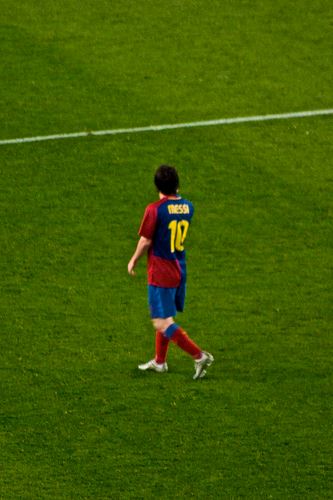
Leo Messi, footballer of the FC Barcelona
The Farmhouse, located next to the Stadium, is the home of the Barça youth. This landmark building, part of the heritage and history of FC Barcelona, is a former farmhouse residence built 1702.The Farmhouse, located next to the Stadium, is the home of the Barça youth. This landmark building, part of the heritage and history of FC Barcelona, is a former farmhouse residence built 1702.
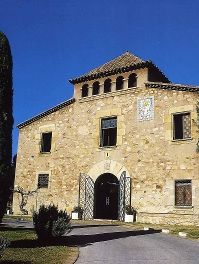
La Masía
At first, the farmhouse was used as a workshop for making the model work and living architects and builders of the Camp Nou, as well as the starting point for visits by dignitaries and associated construction works. Once opened the stadium of FC Barcelona on September 24, 1957, the farmhouse was closed awaiting a destination. In the presidential term of Enric Llaudet the building was remodeled and expanded while to host the headquarters of the club, leaving the Via Laietana to move next to the stadium. The new headquarters was inaugurated on September 26, 1966.At first, the farmhouse was used as a workshop for making the model work and living architects and builders of the Camp Nou, as well as the starting point for visits by dignitaries and associated construction works. Once opened the stadium of FC Barcelona on September 24, 1957, the farmhouse was closed awaiting a destination. In the presidential term of Enric Llaudet the building was remodeled and expanded while to host the headquarters of the club, leaving the Via Laietana to move next to the stadium. The new headquarters was inaugurated on September 26, 1966.
The year 1979 became a residence
The rise of the club and the creation of various secretariats Masia found that not having enough room for office, which again was taken by the board of Agustí Montal, now next to the Ice Rink. Thus, the farmhouse was again available for a new service. The board of Josep Lluís Núñez performance soon took him: the Masia became the residence of young players residing outside Barcelona adaptation works were carried out very quickly, and October 20, 1979 was officially inaugurated its new use.The year 1979 became a residence.
A quarry with future
Thus the aim of this residence has become sport and intellectually to be young people who have left their families and their communities for a career at the club. Coinciding with the centennial year of the club, the twentieth anniversary La Masía and the balance was all positive. A lot of young players trained in the Masia have come to play for the first team. Among these include Amor, Guardiola, Sergi, De la Peña, Puyol, Xavi, Reina, Victor Valdes, Gabri or Messi, and a significant number of other players who have been a different teams in the Spanish league. Successful result of this training, La Masía has become synonymous customary to refer to the FC Barcelona squad.
Facilities
The list of young talents that reside in the farmhouse is not limited to players from Catalonia or the rest of the state, but also about other countries. The Masia building has two floors and an attic and has 610 m2. It housed 60 children (12 sleeping in the same Masia and 48 in other rooms in the stadium) and has a kitchen, dining room, lounge, library, administration, baths, showers and four large bedrooms and dressing rooms.
Young people being prepared in The Masía
Best regards,
Luis
Sponsored by Costaluz Lawyers
Click down here:
 0
Like
Published at 1:16 PM Comments (0)
0
Like
Published at 1:16 PM Comments (0)
The word CEPA in Spanish
Saturday, September 29, 2012
Today I have went out to take (eat) "tapas" with my friends, Mark and Sally Anne.Then, being in a bar of tapas, named "La Cepa", they asked me what "Cepa" meant.Therefore I have thought to write this post, as a tribute to them, in order to explain this word and another ones similar.
I tell them that a "Cepa" is a Trunk or vine plant.I show you an example of a strain:
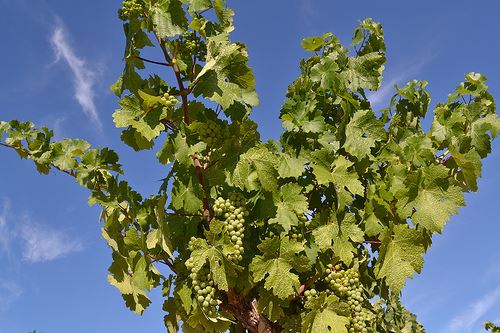
"Cepa", by Gorka Mauleon, at flickr.com
Here you have the website of the bar "La Cepa", in Algeciras; click down here:
http://www.atapear.com/guia-de-bares-de-tapas/mapa/algeciras/la-cepa
Another similar word is "Capa"; it has several meanings, but the most famous one is: "Coat":
(1).jpg)
A spanish coat
Another meaning of "Capa" = "Layer", for example in graphic design.
Also you can say "Capa" in painting.
Also you can use it as "Cape" = "Capote", in bullfighting.
Another similar word is: "Copa".Its more famous meaning is "Cup"; for example: a cup of wine.
But another meaning is "Treetop".
Best regards,
Luis.
Sponsored by Costaluz Lawyers
Click down here:
.jpg)
 0
Like
Published at 12:01 AM Comments (0)
0
Like
Published at 12:01 AM Comments (0)
Valley of the Almanzora (Almeria-Spain)
Friday, September 28, 2012
Antes de remansarse en el pantano de Cuevas del Almanzora, este rio habrá recogido las aguas de diversas ramblas procedentes de las sierras de Lúcar y Filabres.Su curso sortea algunas viejas poblaciones, como Tíjola, animada por numerosas fuentes, o Serón y Purchena, presididas por sus castillos árabes. En su trayecto, el Almanzora regará huertas y frutales, creando uno de los escasos oasis vegetales de la provincia.
Before a quiet pool in the swamp of Cuevas del Almanzora, this river waters have been collected from various wadis Lúcar saws and Filabres.Its course circumvents some old villages, as Tíjola, animated by numerous sources, or Serón and Purchena presided by its arab castles. On the way, the Almanzora irrigate orchards and fruit, creating one of the few oasis plants in the province.
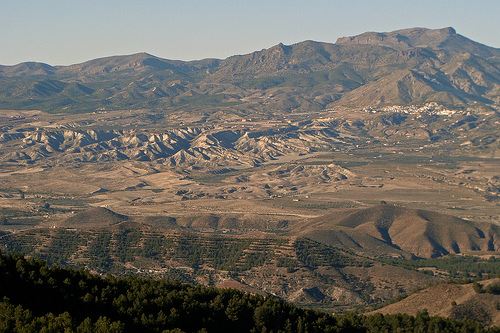
"032 ALMANZORA Sierra de las Estancias", Almería, South-east of Spain, by Miradas de Andalucía, at flickr.com
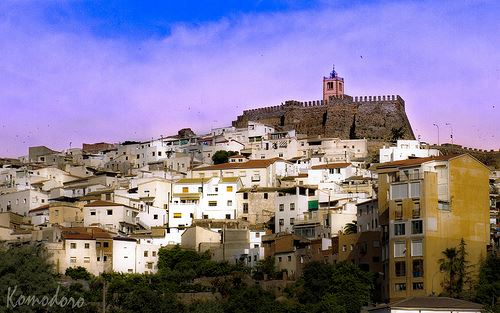
"Serón - Almería", Almeria, South-east of Spain, by KomodorO / Paco LopeH, at flickr.co
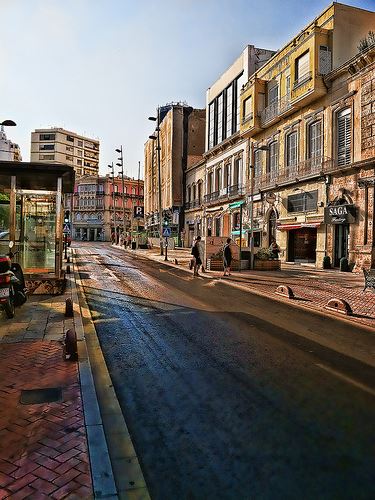
"Llegando a Puerta Purchena", Purchena, Almería, South-east of Spain, by Felix Sabio, at flickr.com
Alojamientos cercanos:
ALOE VERA, en Almajalejo. A poca distancia de Huércal-Overa, la aldea de Almajalejo ofrece uno de los pocos alojamientos rurales de la cuenca del Almanzora.Un conjunto de sencillas construcciones que incluyen cocina-comedor, 4 habitaciones dobles y 1 vivienda para 6 personas.
Accommodation nearby:
ALOE VERA, in Almajalejo. Within walking distance of Huércal-Overa, Almajalejo village offers one of the few lodgings Almanzora.A basin simple set of constructs that include kitchen, 4 double rooms and 1 house for 6 persons.
Telephone numbers: 667 597 123 / 950 528 896
email: agroturismo_aloe_vera@hotmail.com
Best regards,
Luis.
Sponsored by Costaluz Lawyers
Click down here:
.jpg)
 0
Like
Published at 12:34 PM Comments (0)
0
Like
Published at 12:34 PM Comments (0)
More funny phrases by spanish children 2
Thursday, September 27, 2012
Claudia, 4 years:
Claudia's father bent down to tie his shoes, and the girl, to see his bald pate, hallucinated exclaimed: 'Dad, you meat head!'.
Manuel, 3 years:
In the nursery to which there is Manuel, there are babies too. One day I was looking at how one of 10 months turned the pages of a story, while babbling nonstop, and told his teacher: "I hate when you read in English '.
Juan Antonio, 8 years:
Juan Antonio's parents were saying how tired they were with the family business, that was a bakery. So, Juan Antonio said:
"But you sell the oven and you buy a CORTE INGLES".
Oriol, 2 and ½ years:
Oriol was with his parents at the Barcelona Aquarium. In the shark tank had two divers. Oriol stared at them and said:
"Look mom, so large and with a pacifier".
Mary, 5 years:
Mary wrote this text on a sheet to his father:
"YOU ARE THE BEST DAD IN THE WORLD. I love you. Sometimes you spend with the salt, but we each have our ways ".
Philip, 2 ½ years:
Philip did something naughty and scolded her mother, the boy looked at his father and said:
"Mom is angry? BUY ANOTHER?".
David, 5 years:
One day he said to his parents: 'And you, when I have a girlfriend, where are you going to live?'.
Pedrito 4 years:
A couple of months decided to give identity cards, which arrived a couple of weeks. His mother taught him and told him it was his card, he said: 'Oh, good, now I can drive'.
Ivan, 5 years:
Ivan asked his mother: "Mom, how I came out of your belly? '. And his mother said: 'Well, you came out head first, then shoulders, then the body and finally the legs'. Ivan was thoughtful and half scared tells his mother: "Mom, I left but shattered?'.
Marta,4 years:
Marta had heard his older brother that man came from monkey, so he asked his mother: 'You, Mom, when you were a monkey .. Already wore glasses? '.
Thomas, 6 years:
One day Thomas asked his mother: 'If you want to be a bullfighter, does the bull have to take or you would get there?.
Eduardo, 6 years:
One morning, when his mother woke him up to go to school, Eduardo said: 'I do not wanna go to school. Erase me '. The mother said:'But if I can not erase and you have to go every day'. Eduardo, looking surprised, asked: 'Do I have noted with pen?'.
Charlie, 3 years:
In the salon waiting their turn for a haircut. They give a story and asks for a comic book zipi and scat. "But you already know how to read?" asked the barber. "No, but LOOK".
Best regards,
Luis.
Sponsored by Costaluz Lawyers.
Click down here:
.jpg)
 0
Like
Published at 2:15 PM Comments (0)
0
Like
Published at 2:15 PM Comments (0)
My Spain
Wednesday, September 26, 2012
Our best Ambassador:
His Majesty the King Juan Carlos.Here he is with tha Spanish Football Team and the National Coach, Vicente del Bosque, after winning the World Cup:
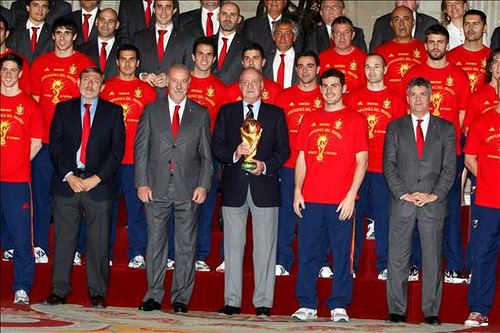
"El Rey Juan Carlos sostiene el trofeo", Madrid, Spain, by Globovisión, at flickr.com
The greatest defender of our Culture:
Her Majesty the Queen Sofía..EMASESA concession was awarded the Europa Nostra award as international recognition of an important work of historic preservation and artistic Seville. S.M. Queen Sofia in 1991 gave himself the Medal of Honor of this prestigious association for the restoration work conducted by the entity in the Palace of the Ponce de Leon and the former Convent of the Third Order of the Franciscans, current headquarters of Metropolitan Emasesa.
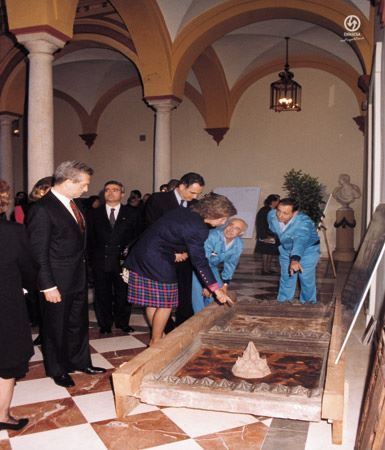
"La Reina Sofía visita la restauración de la Sede Social de EMASESA", Spain, by --EMASESA--
The Patron Saint of Spain:
The Virgin of El Pilar:
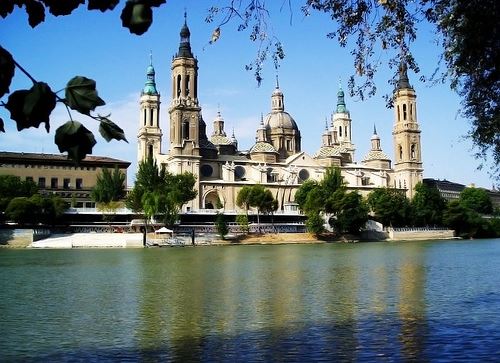
"Cupulas da Basilica Nuestra Señora del Pilar", Zaragoza, North-east of Spain, by L Lemos, at flickr.com
The Patron Saint of Spain:
Santiago el Apóstol, who is inside the Cathedral of Santiago de Compostela, where each year arrive millions and millions people, from all over the world, who want to make "El camino de Santiago" ("The road to Santiago").
A very unique building:
The Holy Family built by Gaudí, but not finished:

"Temple Expiatori de la Sagrada Familia", Barcelona, North-east of Spain, by 7Bart at flickr.com
Another nice Cathedral:
The Cathedral of Palma de Mallorca:
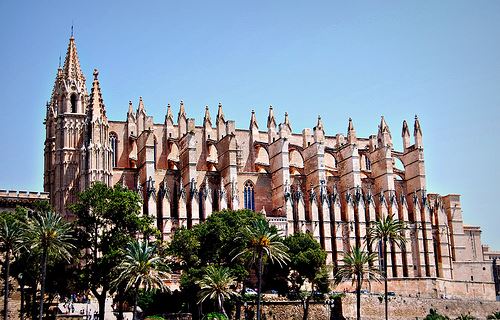
"Catedral de Palma de Mallorca", Islas Baleares, North-east of Spain, by tetegil, at flickr.com
Perhaps the highest Sanctuary in Spain:
The Sanctuary of Covadonga:
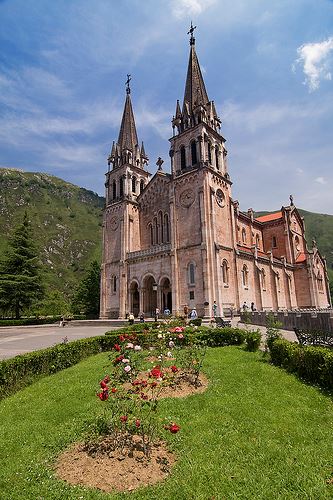
"Santuario de Covadonga", Covadonga, Principado de Asturias, North-west of Spain, by Jambuling, at flickr.com
A very famous Cathedral in the North of Spain is the Cathedral of León:
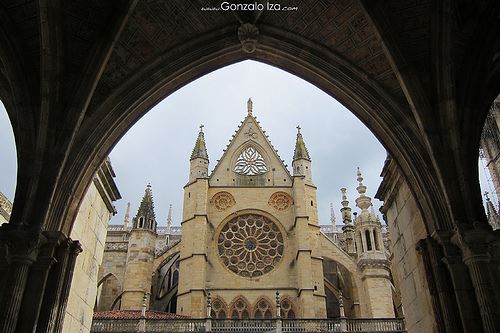
"Cathedral of Leon", Leon, North-west of Spain, by chalo84, at flickr.com
Another famous Cathedral in Spain:
The Cathedral of Burgos and Square Santa María:
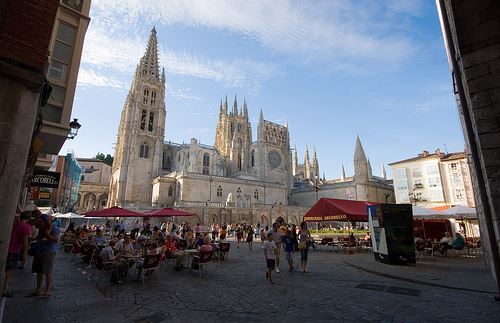
"Catedral de Burgos y Plaza de Santa María", Burgos, North-west of Spain, by El coleccionista de instantes, at flickr.com
A Cathedral linked to the Spanish Royal Family: here, HRH Prince Philip married, on May 22, 2004:
The Cathedral of La Almudena:

"Catedral de la Almudena", Madrid, Spain, by Turismo Madrid, at flickr.com
Our greatest representative of the Painting in Spain:
The building of the "Museum de El Prado":
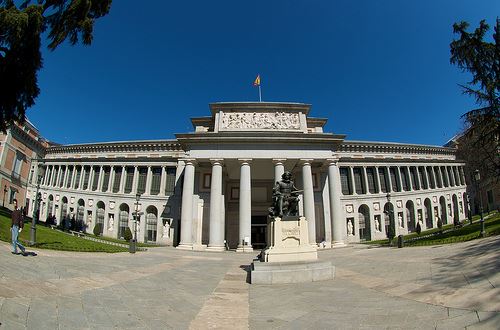
"Museo del Prado", Madrid, Spain, by Jim de Chin, at flickr.com
Another Sanctuary to Andalusia is the Royal Monastery of Guadalupe (Cáceres,
Extremadura).
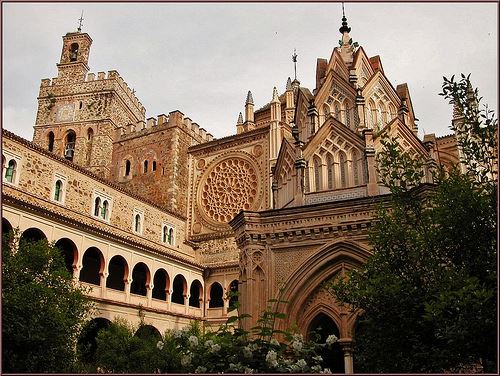
"Real Monasterio de Santa Maria de Guadalupe, Caceres, South of Spain, at flickr.com
Some of the most famous bows in Spain:
The bows of the Mosque of Cordoba:
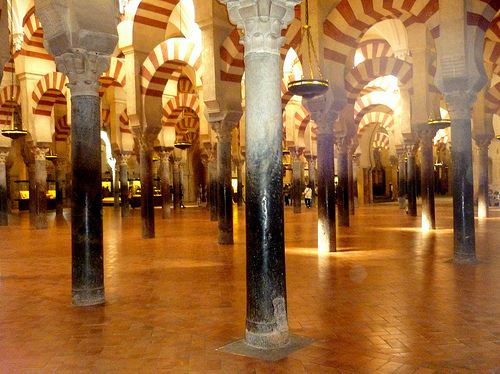
"La Mezquita de Cordoba", Cordoba, South of Spain, by Foticografia, at flickr.com
A very famous Cathedral in the Capital of Andalusia:
The Cathedral of Sevilla:
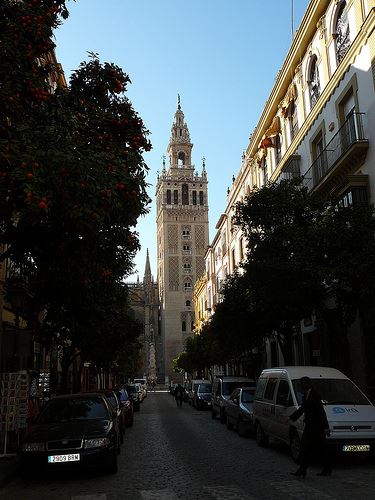
"La Giralda", Sevilla, South of Spain, by Julia Folsom, at flickr.com
A wonder in Spain:
The Alhambra:
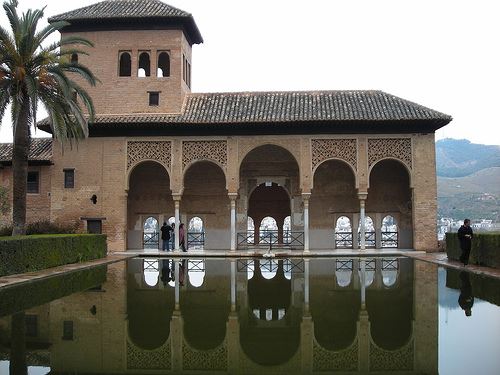
"La Alhambra Reflection", Granada, South-east of Spain, by meganpru, at flickr.com
Another important building in Andalusia:
The Cathedral of Cádiz:
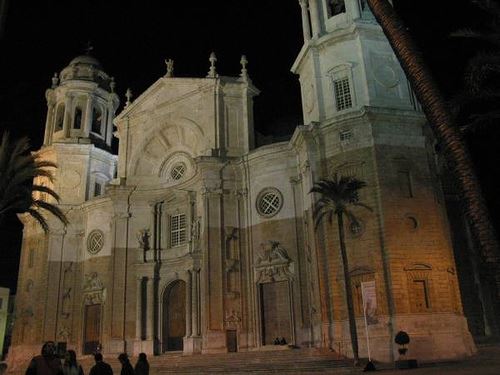
"Cadiz Catedral - Cathedral", Cadiz, South-west of Spain, by degsyw, at flickr.com
Kind regards,
Luis
Sponsored by Costaluz Lawyers
Click down here:
.jpg)
 0
Like
Published at 1:04 AM Comments (0)
0
Like
Published at 1:04 AM Comments (0)
Youth Facial Recognition in Spain
Tuesday, September 25, 2012
An Institute of Secondary, in Badalona (North-West of Spain), has installed some facial recognition machines in the center with the goal of controlling, effectively, the attendance of students. The company responsible for the installation of this system is Xip Solucions, located in Vilassar de Mar.
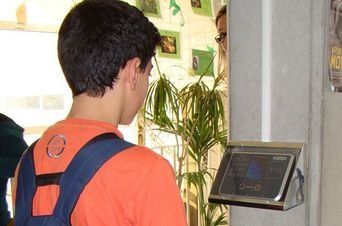
Machine of Facial Recognition in I.E.S. of Badalona
From now on, students of the institute Enric Borràs, the neighborhood of la Salut, it will be more difficult if they miss class. This system allows you, if one day a student does not attend school, parents receive an SMS or an email with this information. Weekly, the student tutors receive a list of the Times missed class each student.
The system also reports whether the student is late to class. In less than two seconds, the terminals installed in the school the student can recognize only standing near the machine. The terminal reads, in 3D, the square formed from the eyebrows to below the lip. With this information, the vectors of distance and depth are sufficient to identify the person. Within a minute, the terminal can identify up to 50 students. It also has a filter system that avoids sending SMS to the parents if they have notified the center that the student will not go to class.
From Xip Solucions say it is the most effective and quick recognition. The technical director of the company, Oriol Martí, explains that ID cards could cause the exchange students and digital printing is not very effective with the growth of adolescents.
The Institute's Director “Enric Borràs”, Ana Garcia, said that, since the machines have been installed, the first of ESO students attend class every day. The school decided to implement this system, funded with grants from the Pla de Millora to combat truancy. Besides the responsibility of the students to learn to be controlled, says Solucions Xip have also noticed an increase in parental involvement.
The product FaceID will cost 750 euros per terminal. In high school “Enric Borràs” have four installed for recognition of 150 students from first to ESO. From Xip Solucions say, with the situation of Catalan schools, is being difficult to more centers. The institute Enric Borràs Badalona Catalan is the only institute that has installed and is waiting to collect the contribution Millora Pla-late-going to expand the terminals and control the ESO sophomores.
This system has been implemented in industry and in the city of Girona, which controls the entry and exit of workers.
Kind regards,
Luis
Sponsored by Costaluz Lawyers
Click down here:
.jpg)
 0
Like
Published at 1:01 PM Comments (1)
0
Like
Published at 1:01 PM Comments (1)
A new spanish song out of Spain
Tuesday, September 25, 2012
The spanish singer, Alejandro Sanz, has just published a new album, "La música no se toca". In this album, there is a song, "No me compares" ("Do not compare me"), that I love.
I like Alejandro´s music and I like Alejandro because, although he was not born in Algeciras, like me, but he lived here, for eight years, since he was a baby --because his father was born in Algeciras, but when Alejandro was eight years old, his family went to live in Madrid-- and also I like his music.
This is the Bay of Algeciras --you can see my town at the end of the picture:
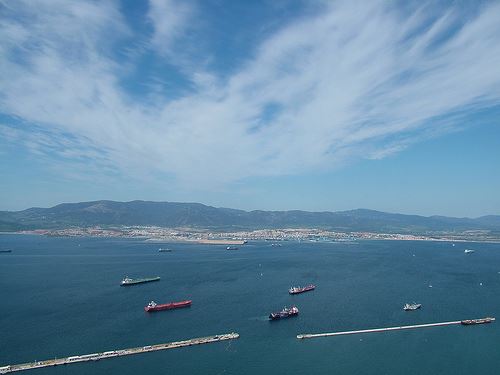
"View from the Rock", Algeciras, Cadiz, South of Spain, South of Europe, by Scott Cawley, at flickr.com
This is the song "No me compares":
And this is the lyric:
Ahora que crujen las patas de la mecedora
y hay nieve en el televisor.
Ahora que llueve en la sala y se apagan
las velas de un cielo que me iluminó.
Ahora que corren los lentos
derramando trova y el mundo
Ring! Ring! despertó.
Ahora que truena un silencio feroz,
ahora nos entra la tos.
Ahora que hallamos el tiempo,
podemos mirarnos detrás del rencor.
Ahora te enseño de dónde vengo
y las piezas rotas del motor.
Ahora que encuentro mi puerto,
ahora me encuentro tu duda feroz.
Ahora te enseño de dónde vengo
y de qué tengo hecho el corazón.
Vengo del aire
que te secaba a ti la piel, mi amor.
Yo soy la calle...
donde te lo encontraste a él.
No me compares,
bajé a la tierra en un pincel por ti.
Imperdonable,
que yo no me parezco a él,
ni a él ni a nadie.
Ahora que saltan los gatos buscando las sobras
maúllas la triste canción.
Ahora que tú te has quedado sin palabras,
comparas, comparas con tanta pasión.
Ahora podemos mirarnos sin miedo al reflejo en el retrovisor.
Ahora te enseño de dónde vengo
y las heridas de que me dejó el amor.
Ahora no quiero aspavientos
tan sólo una charla tranquila entre nos...
Si quieres te cuento por qué te quiero
y si quieres cuento por qué no.
Vengo del aire
que te secaba a ti la piel, mi amor.
Yo soy la calle...
donde te lo encontraste a él.
No me compares,
bajé a la tierra en un pincel por ti.
Imperdonable,
que yo no me parezco a él,
ni a él ni a nadie.
Que alguien me seque de tu piel, mi amor.
Que nos desclaven y que te borren de mi sien.
Que no me hables.
Que alguien me seque de tu piel, mi amor.
Que nos desclaven,
yo soy tu alma, tú eres mi aire.
No me compares.
Que nos separen, si es que pueden
que nos separen, que lo intenten
Que nos separen, que lo intentenº
yo soy tu alma y tú mi suerte
Que nos separen, si es que pueden
que nos desclaven, que lo intenten
Que nos separen, que lo intenten
yo soy tu alma y tu mi suerte.
In this video-clip, you can see many objects that represent many memories of Alejandro Sanz.And the child represents when Alejandro was a child.
I hope that you liked it such as I do.
Best regards,
Luis.
Sponsored by Costaluz Lawyers
Click down here:
.jpg)
 0
Like
Published at 4:46 AM Comments (0)
0
Like
Published at 4:46 AM Comments (0)
Bicentennial Concert in the South of Spain
Monday, September 24, 2012
The last Saturday September- 22, in the night, it was celebrated a Bicentennial Concert in the Medieval walls, in Algeciras (Cadiz – South of Spain).
The show was starring by the Algeciras Symphony Orchestra, “Amigos de la Música”, has been a resoThe concert included the premiere two pieces of music composed by the director of the orchestra, Juan Carlos Ocaña, which are entitled "Merinís Walls" and "Algeciras 1812".
.jpg)
Medieval walls in Algeciras.
The musical has been complemented by a play by members of the theater group coordinator Barrio Vivo and based on a text written for the occasion by Agustín Román in which two students have also participated in the Municipal School of Bullfighting.unding success both in public and in the quality of the pieces performed.
The mayor, José Ignacio Landaluce, who was accompanied by all the members of the government team, the orchestra delivered a certificate commemorating the occasion thanks to the efforts of all the players and extras who participated.
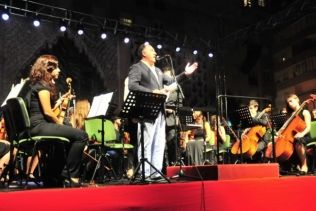
The Mayor of Algeciras talking about the show.
I hope that any other year you can come here, to enjoy this show.
Kind regards,
Luis
Sponsored by Costaluz Lawyers
Click down here:
.jpg)
 0
Like
Published at 10:02 PM Comments (0)
0
Like
Published at 10:02 PM Comments (0)
The Spanish Navy Patrol Tarifa P-64
Monday, September 24, 2012
The Spanish Navy Patrol “Tarifa P-64” has arrived at the port of Tarifa the last Friday September, 21, in the first hour in the morning.It has docked in the dock Sagrado Corazón de Jesús.
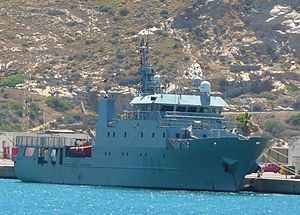
Patrullera "Tarifa P-64"
An hour later the ship's commander, Lieutenant Commander, Antonio Estevan Garcia, has been received by the Mayor of the City of Tarifa. The soldier, dressed for the occasion, wearing gloves and baton, recently conducted with the Mayor of the city, Juan Andres Gil Garcia, and the Deputy Mayor, Juan Jose Medina.
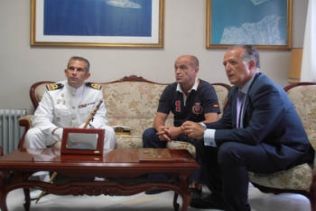
The Commander of "Tarifa P-64" with the Mayor of the Tarifa City
The captain of the ship "Tarifa P-64" has delivered to the session a memory about the special moment experienced by the town these days, with the presence of the patrol area that bears the name of the city. The days of living together and want to be remembered by the Navy and by the City. The communes have shown the lieutenant commander's battle flag that is ready for tomorrow's ceremony. The focus of the talks has been primarily the latter.
Patrol "Tarifa P-64" is equipped with 8 officers, 7 NCOs and 31 scale military army and navy. The ship develops surveillance, inspection and support for the fishing fleet in international fisheries and the national fishery. Moreover, it is a class patrol "Chilreu" which is assigned to the Maritime Action Force of Cadiz.
The "Tarifa P-64" was conceived in 2003 by the General Secretariat of Fisheries and delivered to the Navy in June 2004.
Citizens could visit the boat in open days taking place in Tarifa. Also on Saturday afternoon, from 16 hours to 20 hours.
The Tarifa Mayor again reminded that the presence of the patrol at the local port is due to the city makes tribute to the Armed Forces. Acts that are part of the commemoration of the bicentennial of the 1812-2012 Tarifa Site.
Kind regards,
Luis
Sponsored by Costaluz Lawyers
Click down here
.jpg)
 0
Like
Published at 12:12 PM Comments (0)
0
Like
Published at 12:12 PM Comments (0)
Treatment of verbs in Spanish
Saturday, September 22, 2012
The day before yesterday night, I was listening the radio and suddenly they started to talk about the website “Molino de ideas” (“Mill of ideas” = www.molinodeideas.es) , where they are interested in Language, in particular the Spanish and the Natural Language Processing.
They develop websites, products and services based on the language, to help Spanish speakers, whether native or adopted, and to simplify the learning of languages and do much more thorough and effective Natural Language Processing. An example of this is Onoma, the verb conjugator smart.
By the way of verbs, I have thought of one verb, that I thought other times; now I will explain you why I thought it other times.
Well. This verb is: Dormir = to sleep. And I have thought of it, because, many times, I have listened “dormiendo”, instead of “durmiendo” = “sleeping” = the present participle of the verb “dormir” (“to sleep”).Then, I have entered on the web site (www.molinodeideas.es) –and concretely I have clicked on conjugador de verbos inteligente, where you read: ¿Qué hacemos?-- today and I have search the verb “To sleep” and the result has been this one:
El verbo puede ser pronominal en función del significado El verbo no está conjugado pronominalmente.
Formas no personales
Infinitivo
dormir
Participio
dormido
Gerundio
durmiendo
Formas Simples
Indicativo
Presente
· Yo duermo
· Tú duermes
· Él duerme
· Nosotros dormimos
· Vosotros dormís
· Ustedes duermen
· Ellos duermen
Pretérito Perfecto Simple
· Yo dormí
· Tú dormiste
· Él durmió
· Nosotros dormimos
· Vosotros durmisteis
· Ustedes durmieron
· Ellos durmieron
Condicional
· Yo dormiría
· Tú dormirías
· Él dormiría
· Nosotros dormiríamos
· Vosotros dormiríais
· Ustedes dormirían
· Ellos dormirían
Pretérito Imperfecto
· Yo dormía
· Tú dormías
· Él dormía
· Nosotros dormíamos
· Vosotros Dormíais
· Ustedes
· Ellos dormian
Futuro
· Yo dormiré
· Tú dormirá
· Él dormirá
· Nosotros dormiremos
· Vosotros dormiréis
· Ustedes dormirán
· Ellos dormirándormirán
Subjuntivo
Presente
· Yo duerma
· Tú duermas
· Él duerma
· Nosotros durmamos
· Vosotros durmáis
· Ustedes duerman
· Ellos duerman
Pretérito Imperfecto A
· Yo durmiera
· Tú durmieras
· Él durmiera
· Nosotros durmiéramos
· Vosotros durmierais
· Ustedes durmieran
· Ellos durmieran
Pretérito Imperfecto B
· Yo durmiese
· Tú durmieses
· Él durmiese
· Nosotros durmiésemos
· Vosotros durmieseis
· Ustedes durmiesen
· Ellos durmiesen
Futuro
· Yo durmiere
· Tú durmieres
· Él Durmiere
· Nosotros durmiéremos
· Vosotros durmiereis
· Ustedes durmieren
· Ellos durmieren
I hope that help you with your learning of the Spanish.
Best regards,
Luis.
Sponsored by Costaluz Lawyers
Please, click down here:
.jpg)
 0
Like
Published at 4:59 AM Comments (0)
0
Like
Published at 4:59 AM Comments (0)
A hope against the Myopia in Spain
Wednesday, September 19, 2012
The 30 % of the spanish population suffers from Myopia.Therefore, in the University of Valencia (East of Spain), there is a group of scientists, who is going to start a project in a month.The project shall last 5 years and it will try to prevent the development of this disease.For it, they will use the astronomical technology (the same used in observing the Universe).
This project shall be directed by the Professor of Optics, Robert Montés, who was talking about it, yesterday on the radio.
Montés explained the method that they will use: it consists on to send signals to the retina, in order to know which therapies must be applied.And also they will be abble to know why this disease increases, above all in children.
.jpg)
Myopic eye. Focused image in front of the retina. Unfocused image on the retina
This group of scientists name it "Adaptive Technology".The aim of this technique is knowing which signals reach the eye.The Professor Montés explains that to the eye reach some good signals, but also bad signals that give the order to the retina of growing.So, the myopia grows too.Montés says that if they are abble to eliminate the bad signals (the bad information received by the retina), our eye will stop growing and so they will be abble to alleviate the problems caused by the myopia.
This is a project funded by the European Union.I hope that it can help many people from Spain and from other countries.
Best regards,
Luis.
Sponsored by Costaluz Lawyers
Click down here:
.jpg)
 0
Like
Published at 1:43 PM Comments (0)
0
Like
Published at 1:43 PM Comments (0)
Solutions to the spanish riddles 3
Tuesday, September 18, 2012
41. La pera The pear.
42. El platano The banana.
43. El te The tea.
44. El trigo The wheat.
Sponsored by Costaluz Lawyers
Click down here:
.jpg)
 0
Like
Published at 12:58 PM Comments (0)
0
Like
Published at 12:58 PM Comments (0)
More spanish riddles 3
Tuesday, September 18, 2012
Here you have some very popular riddles in Spain.
Please, try to guess them, before reading the solutions, in my next post.
Have a good luck!.
41. Blanca por dentro, White inside,
verde por fuera. green outside.
Si quieres que te lo diga, If you want me to tell you,
espera. wait.
42. Oro parece, Gold seems,
plata no es, Silver is not
el que no lo sepa, Who does not know it,
un tonto es. a fool is.
43. Te lo digo y te repito, I tell you it and I repeat you,
y te lo debo avisar, and I must warn you,
que por mas que te lo diga, that even if I tell you,
no lo vas a adivinar. you will not guess it.
44. Verde nací, Green I was born,
amarillo me cortaron, Yellow they cut me,
en el molino me molieron in the mill they ground me
y blanco me amasaron. and white they kneaded me.
Sponsored by Costaluz Lawyers
Click down here:
.jpg)
 0
Like
Published at 12:37 PM Comments (0)
0
Like
Published at 12:37 PM Comments (0)
Another Spanish sayings and proverbs, 39
Monday, September 17, 2012
A mal tiempo, buena cara = To bad weather, good face.
It recommends maintain calm and optimism to the misfortune.With that sense is used by the spanish writer, Benito Perez Galdós, in his book "From Oñate to the Granja".
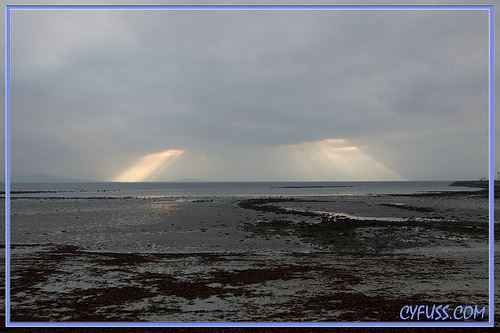
"Luces desde el cielo", by cyfuss, at flickr.com
Sponsored by Costaluz Lawyers
Click down here:
.jpg)
 0
Like
Published at 10:33 PM Comments (0)
0
Like
Published at 10:33 PM Comments (0)
Abandoned train stations in Spain
Friday, September 14, 2012
The last August, I watched on tv a write-up about the abandoned train stations in Spain. I stayed watching it, because I have always loved train.
The write-up started talking about a village named Portas (Pontevedra, South-West of Galice, North-west of Spain), where from 2008 – July, its train station is closed, caused of the new reform on the railway line in the coast of Galice.
The Portas neighbors have united on a platform, named “Salva o tren” (“Save the train”), in order to ask Administration that it recovers the line.Those neighbors united say that they are many old people and students, who need that line or another solution –for example a bus— in order to go out the village within to spend more money –because, actually they have to take a taxi or travelling in the car of a neighbor--.
.JPG)
"Station of Portas", Portas, Pontevedra, South of Galice, North-West of Spain, by Javi Lago
The trouble is that today Spain has invested a lot of money in the High Speed Train.It is very good, of course –actually, Spain is the country with the most number of lines AVE--, because it makes life easier between cities, thanks to shorter trips--; but the sacrifice is for people who lives in little villages, because the trains, that passed before, now do not stop or even they never go over those rails.
Administration says that “everyting that is not profitable, you can not have”.But I think that it is not so exact, because, still many people, in many villages, need to travel, although it is with other lower speed.Moreover, I think that many people from Spain and out of Spain should like to travel with those trains and its lines, if they were prepared.So, more people would leave more money and it should generate more jobs and Administration should have money in order to keep stations on.
Portas lost the train because the reform in the Atlantic axle.The Atlantic axle is the line along the coast of Galice, from Vigo (in the South) to La Coruña (in the North).It had to become a high-speed line.With AVE (Alta Velocidad Española), the route between Santiago and Coruña spends 35 minutes, instead of another speed train that spends more than one hour.
In order to reduce the time, the outline has been changed in some sections.Cause of that, many villages have been isolated; that is the case of Cerceda (La Coruña). In Repor, a very young woman from Cerceda said that, a long time ago, the building of the station was closed, however the trains stood still.Also said that the people of her village still had a little hope of seeing the train again, passing through that station, because, some days before closing the station, they put some new posters.Each station closed, has new posters with the name of the station.
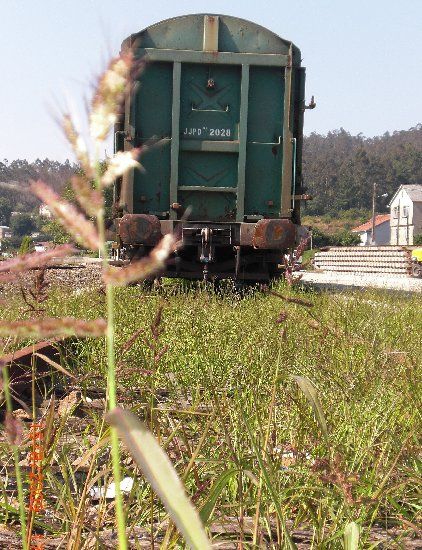
"An abandoned freight car in the old train station of Meirama", Cerceda, La Coruña, North of Galice, North-West of Spain
As in Portas, in Cerceda there is no other public transportation, currently.
In Repor, two ladies were remembering when they were two children and lived in front of the station; in that epoch, they liked to play going out of their houses, running, in order to see how the train was passing.
The neighbors of Cerceda have to travel 4 Kms, to the new station, where they can take the train AVE.
Another village, with the same problem is “Ordes” (La Coruña).Its station is far from the village.Through that station pass 48 trains with passengers; but, only 8 stop.
But, out of Galice, you can find several abandoned train stations; one of them is the semi-abandoned train station of Castillejo-Añover (Toledo).
We say “Semi-abandoned”, because it is still used by the company ADIF. A manager performs maintenance routine visits, but not the station but facilities adjacent.
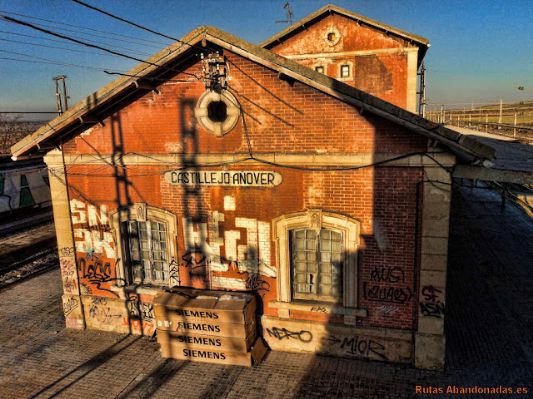
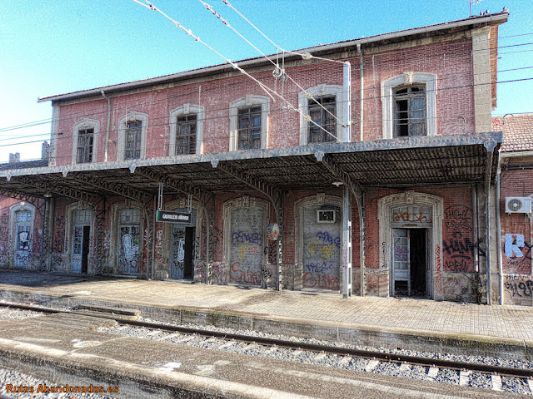
The old station of Castillejo-Añover, Toledo, Spain.Two pictures courtesy by Rutas Abandonadas.es
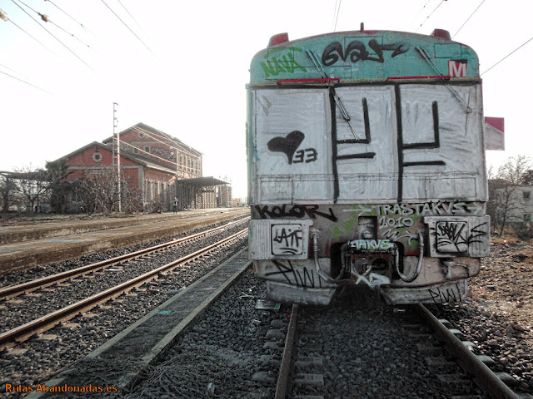
An abandoned train
The train tracks are still used by fast trains.On the area of the siding, we find a whole train, with graffities, waiting for who knows what fate.
.JPG)
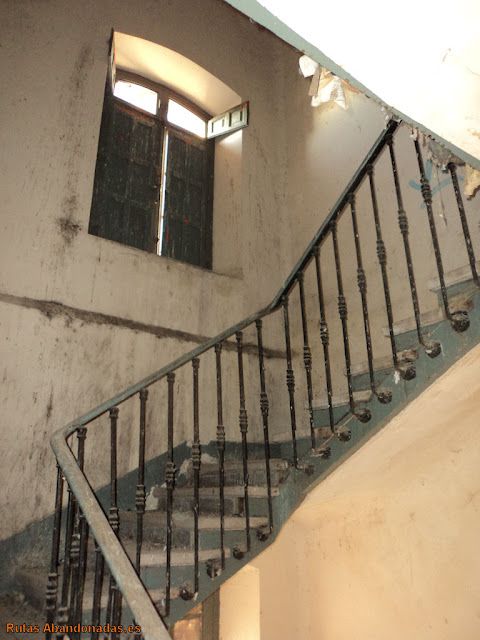
Two pictures inside the station, courtesy by Rutas Abandonadas .es
There is no problem to visit the inside of the station: such the area for travelers, in the ground floor, as the upper rooms, where the stationmaster and perhaps other officer lived.
Who knows if anybody shall be abble to recover this and other stations in order to attend to many people who need those trains for having an easier life?.
I hope that people is assisted.
Best regards,
Luis.
Sponsored by Costaluz Lawyers.es
Click down here:
.jpg)
 0
Like
Published at 1:08 AM Comments (1)
0
Like
Published at 1:08 AM Comments (1)
Wellcome to the Costa de la Luz (Spain)
Tuesday, September 11, 2012
On last September 3, the digital newspaper “Diario de Cádiz” published a great new: THE WHOLESALER TUI WILL SELL 5000 TRAVEL TO CADIZ IN UK NEXT YEAR.
The Tourist Board (in Cádiz) and representatives of the tour operator in the province closed the deal to revive this operation, which will be presented after the signing of the direction of the UK group.
The Costa de la Luz will be back next summer in the catalog of destinations for a holiday tour operator TUI UK, following the agreement reached between the local government and the tourism group to retrieve this operation. After several months of negotiations, the project is closed and its official launch is only at the expense of the heading of the directors of TUI-Thomson UK (the British division of the group), confirmed on Friday by the Vice President and Head of Delegation Tourism, Alejandro Sánchez (PP). It is the last step necessary to formalize the agreement in a publicly traded company.
As progress was made in July, the tour operator will charter flights every week between a British airport terminal to be determined and Jerez, between April and October. Their commitment is to offer 5.000 seats for flight to Cadiz between April and October, a figure which represents 7% of the British that the province received over 2011 (73.000, according to the Board). But the importance of the operation does not reside only in the volume of passengers who join the province, but in promoting the destination to enjoy in the UK market through the impetus of advertising campaigns and sales channels of this giant sale of travel.
The Board has offered to cooperate with the company since its representatives in the province moved to the head of Tourism interest in rebuild in Jerez airport. Support from Regional Council has finally materialized in several promotion campaigns of Cadiz as a destination in the United Kingdom with a combined investment of 50.000 euros, of which the provincial institution will contribute € 20.000. The Tourism Board will support the initiative with another 22.000 euros, while the City of Chiclana cover the remaining 8.000, as recorded by the agreement.
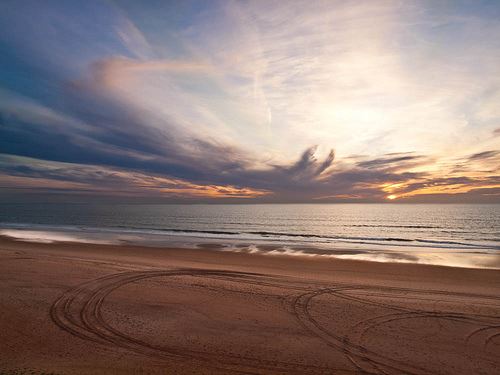
"Chiclana Beach", Cádiz, South of Spain, by JGVphoto, at flickr.com
The town of Chiclana will be the most benefited in the project, for TUI will bid packages with accommodation in Chiclana, and chains like Riu Hipotels mainly and Conil. Industry sources consulted hereby noted that hoteliers have offered conditions "favorable" to the wholesaler with the interest to collaborate in building these new flights. They will also have to invest for promotion in the catalogs of the wholesaler.
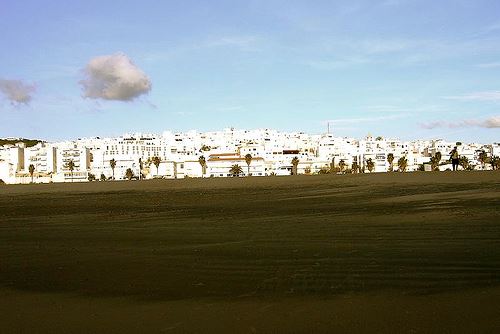
"Conil: white village", Cádiz, South of Spain, by shehani, at flickr.com
TUI is the first channel for German travelers to the coast of Cadiz. For years, the British division operator sold also travel to the destination but, in 2005, decided to cancel its flights to Jerez and hiring. That decision was motivated by the low profitability of the business, the high prices charged by hotels of Cadiz, compared with other domestic coasts, and the limited availability of beds in the months of July and August, a period in which the preferred local hotel to book rooms Spanish customer willing to pay higher prices for their accommodation. The constant stops sale (the hotelier stops offering the intermediary spaces by surprise) also provoked bitter complaints from wholesalers.
In 2009, Thomas Cook, TUI chief competitor, followed suit and also canceled its operations between the UK and the Costa de la Luz. Since then, for the past three years, the British tour operators have not worked in Cadiz, which has only been connected with that country through Ryanair flights. This factor reinforces the interest of the operation which is now confirmed. As reported by the Tourist Board, the intention of both parties is that flights can be extended to two aircraft per week, in 2014, and three in 2015; but this increase in seats will be linked to the results achieved in the next season, which will be crucial .
Thanks and congratulations to everybody who choose coming to the Costa de la Luz.
Bestt regards,
Luis.
Sponsored by Costaluz Lawyers.es
Click down here:
.jpg)
 0
Like
Published at 2:21 PM Comments (0)
0
Like
Published at 2:21 PM Comments (0)
Experimental Project Dual Job Training in Spain
Sunday, September 9, 2012
Next year, a new Project will start in the Secondary School (IES = Instituto de Enseñanza Secundaria) “Virgen de la Paloma”, in Madrid (Spain).Its name will be: “Dual Vocational Training Project” and it will be directed by a german team in collaboration with a spanish team from this School.
.jpg)
"IES Virgen de la Paloma", Madrid, Spain.
The project will be directed by a german team, because it has been applied to a group of students and it has been a success.
This project will be implemented in the Community of Madrid for the first time.The Community of Madrid has signed cooperation agreements with numerous companies in various productive sectors in order to continue developing.
This training model has been distinctive feature:
n That is developed jointly by business and educational center.
n That students participating in the program on a voluntary.
n That companies give scholarships to students with 450 Euros.
The result is that students are welcomed by companies, where "learn by doing" in an actual production environment, enabling them to improve their skills and increase their job placement expectations.
During the 2012-2013 academic year, the project will be developed with the collaboration of six public schools in the Community of Madrid and 14 level training cycles.
Why it will be a project directed by a german team?..., because it has been tested in Germany and there the 78 per cent of the young people, who participated in the program, they stayed at the companies after it.Another important data: in Germany, youth unemployment is 8 per cent; however, in Spain is about 49 per cent.
I hope that this project help young people in Spain to search jobs and they help revive the economy of our country.
Best regards,
Luis.
Sponsored by Costaluz Lawyers.
Click down here:
.jpg)
 0
Like
Published at 2:11 PM Comments (0)
0
Like
Published at 2:11 PM Comments (0)
A poet of the spanish song
Thursday, September 6, 2012
Today, in the morning, I have listened on the radi, the interview to Gabriela Bravo (a member of the General Council of the Judiciary).She chose a song, by Joaquin Sabina, in order to accompany the interview.
The song was "Cristales de Bohemia" and I wanted to tell you this one, because I am get along with Gabriela Bravo, because she said that "Sabina is a poet".Therefore I say that he is a poet of spanish songs.Although....I do not like a lot of lyrics of his songs.I like when he composes absurd phrases, for example, when he says: ".........una noche a las diez de la mañana" (".......a night at ten in the morning (pm)".
Also, I liked to listen this song, because it tells about Prague (a town that I visited in 1991 and I liked very much).
Here it is the song "Cristales de Bohemia" ("Bohemia crystals").Please click down here:
"Cristales de Bohemia" (2009).Album: Vinagre y Rosas.
And this is the lyrics:
Vine a Praga a romper esta
canción
por motivos que no voy a explicarte,
a orillas del Moldava
las olas me empujaban
a dejarte por darte la razón.
En el Puente de Carlos aprendí
a rimar cicatriz con epidemia,
perdiendo los modales:
si hay que pisar cristales,
que sean de bohemia, corazón.
Ay! Praga, Praga… Praga
donde el amor naufraga
en un acordeón.
Ay! Praga, darling, Praga
los condenados pagan
cara su redención.
Ay, Praga, Praga, Praga,
dos dedos en la llaga
y un santo en el desván.
Ay! Praga, darling, Praga,
la luna es una daga
manchada de alquitrán.
Vine a Praga a fundar una ciudad
una noche a las diez de la mañana,
subiendo a Mala Strana,
quemando tu bandera
en la frontera de la soledad.
Otra vez a volvernos del revés,
a olvidarte otra vez en cada esquina,
bailando entre las ruinas
por desamor al arte
de regarte las plantas de los pies.
Ay! Praga, Praga… Praga
donde el amor naufraga
en un acordeón.
Ay! Praga, darling, Praga
los condenados pagan
cara su salvación.
Ay! Praga, Praga… Praga
donde la nieve apaga
las ascuas del tablao.
Ay! Praga, darling, Praga
lágrima que se enjuaga
en Plaza Wenceslao.
Ay, Praga, Praga, Praga,
dos dedos en la llaga
y un santo en el desván.
Ay! Praga, darling, Praga,
la luna es una daga
manchada de alquitrán.
Kind regards,
Luis.
Sponsored by Costaluz Lawyers.
Click down here:
.jpg)
 0
Like
Published at 9:02 PM Comments (0)
0
Like
Published at 9:02 PM Comments (0)
A spanish song from the past
Thursday, September 6, 2012
Yesterday, by chance, I have remembered a song that I liked, when I was a child.It was the song "Tú y yo", by Karina, who began her musical career in 1963; but this song belonged to the album "Pasaporte a Dublin" and it was recorded in 1971.
This is the song, click down here:
In this video, you can see that Karina is so young.
And this is the lyrics of the song:
Llegaste con la primavera = You came with Spring
y tuve tu amistad. = and I had your friendship.
En el verano fue distinto = In the Summer it was different
sentimos algo más. = we felt something else.
En el otoño, hojas = In the autumn, leaves
en el invierno amor. = in winter love.
en el sendero de la vida = in the path of life
ahora somos dos, tú y yo. = now we are two, you and I.
Hay días grises, hay días tristes, = There are grey days, there are sad days,
hay días que hace sol. = there are days when it is sunny.
Lo mismo pasa con nuestras cosas = The same thing happens with our things
y más en el amor. = and more in love.
Lo malo siempre es fácil = The bad thing is always easy
lo bueno cuesta más = the good thing costs more
por eso mereció la pena = so it was worth
dejar a los demás, por ti. = leaving others, for you.
A veces pienso si habré cambiado = Sometimes I wonder if I have changed
pues noto algo en mi = since I feel someting in me
quizá también te habrás notado = perhaps also you have felt
distinto para ti. = different for you by yourself.
Es diferente todo = Everything is different
viviendo con amor = living with love
no hay nada mío = nothing is mine
no hay nada tuyo = nothing is yours
pues todo es de los dos, tú y yo. = since everything is of both, you and I.
Llegaste con la primavera = You came with Spring
y tuve tu amistad. = and I had your friendship.
En el verano fue distinto = In the Summer it was different
sentimos algo más. = we felt something else.
En el otoño, hojas = In the autumn, leaves
en el invierno amor = in the winter love
en el sendero de la vida = in the path of life
ahora somos dos, tú y yo. = now we are two, you and I.
Kind regards,
Luis.
Sponsored by Costaluz Lawyers
Click down here:
.jpg)
 0
Like
Published at 3:25 AM Comments (0)
0
Like
Published at 3:25 AM Comments (0)
Spam post or Abuse? Please let us know
|
|